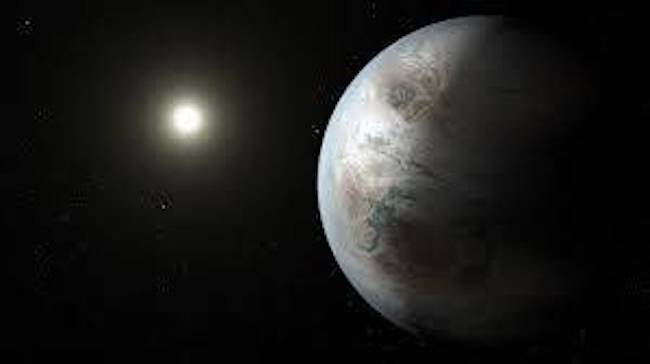Water Found on Potentially Habitable Planet
For the first time, astronomers discovered the presence of water vapor in the atmosphere of K2-18b, a planet considered “Earth-sized” located 110 light years away, within the “Goldilocks” or habitable zone around a star where the temperature is just right - not too hot and not too cold - for liquid water to exist.
K2-18b is considered a “super-Earth,” meaning its mass falls between Earth’s and Neptune’s, but it’s not quite like our home planet. For instance, it is eight times as massive and twice as big.
The planet is also much closer to its star than Earth is from the Sun and completes an orbit in 33 days as opposed to 365 days. Its star, however, is a red dwarf, much smaller and much cooler than the Sun, and so the temperature on K2-18b should be around 10C. (50F)
“This is the first potentially habitable planet where the temperature is right and where we now know there is water,” said Angelos Tsiaras, an astronomer at University College London. “It’s the best candidate for habitability right now.”
The UCL team used the Hubble Space Telescope to observe the star as the planet orbited around it and found that the wavelengths of light that are absorbed by water dropped when the planet crossed in front of its star and then rose again as the planet moved out of the way.
“To our great surprise we saw a pretty strong signature of water vapor,” said Professor Giovanna Tinetti, a London-based physicist from Turin and member of the UCL team. “It means first of all that there’s an atmosphere, and second that it contains a significant amount of water.”
While the presence of water vapor in its atmosphere does not ensure that K2-18b actually has water on its surface, it’s certainly a start. Having established a precedent for finding a planet that meets some of the most fundamental criteria, will make it easier to find Earth-like planets potentially capable of sustaining life in the future.
No doubt further studies will have to be conducted on K2-18b and astronomers hope to keep finding more potentially habitable planets in the years to come, also thanks to upcoming initiatives such as the launch of Nasa’s James Webb space telescope set for 2021 and the European Space Agency’s Ariel mission which will launch in 2028.





































i-Italy
Facebook
Google+
This work may not be reproduced, in whole or in part, without prior written permission.
Questo lavoro non può essere riprodotto, in tutto o in parte, senza permesso scritto.